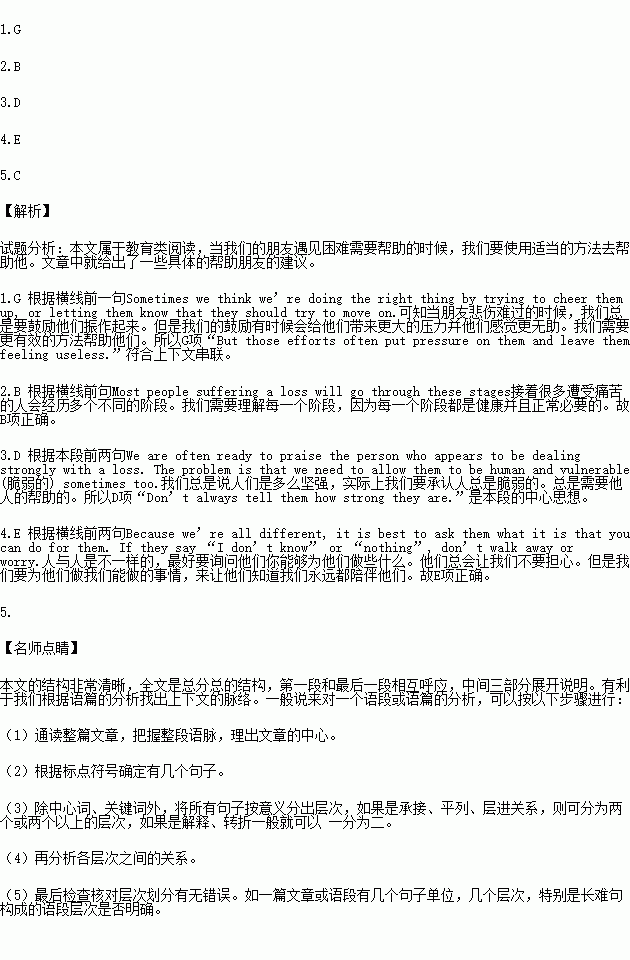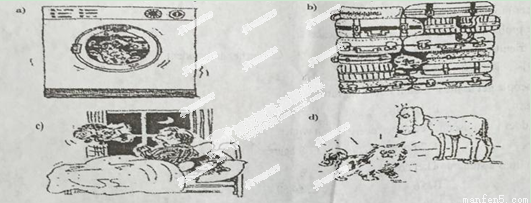题目内容
根据短文内容,从短文后的选项中选出能填入空白处的最佳选项。选项中有两项为多余选项。
When a friend is sad about the loss of a loved one, it’s easy to feel helpless. Sometimes we think we’re doing the right thing by trying to cheer them up, or letting them know that they should try to move on. 1. So here are some ways to help you support your friend in time of need.
1. Recognize the stages of sadness.
Most people suffering a loss will go through these stages, often in no particular order: denial (拒绝), bargaining, anger, depression and acceptance. 2. The more familiar you are with these stages, the better you’ll be to support your friend.
2. 3.
We are often ready to praise the person who appears to be dealing strongly with a loss. The problem is that we need to allow them to be human and vulnerable (脆弱的) sometimes too. After all, there’s strength in letting out your feelings from time to time.
3. Ask them what they need.
It’s normal to feel you can guess what your friend needs. Because we’re all different, it is best to ask them what it is that you can do for them. If they say “I don’t know” or “nothing”, don’t walk away or worry. 4. And let them know that you will be there when they think of something.
Finally, keep in mind that loss is not just felt through death. It can be the loss of a job, the loss of hope or expectation and so much more. 5. And your role as a supporter is very important and helpful.
A. Be the person who follows up.
B. Each one is healthy and necessary.
C. Loss is a difficult thing to work through.
D. Don’t always tell them how strong they are.
E. Just offer your support in whatever way you can.
F. Your caring will be appreciated and provide much comfort.
G. But those efforts often put pressure on them and leave them feeling useless.



